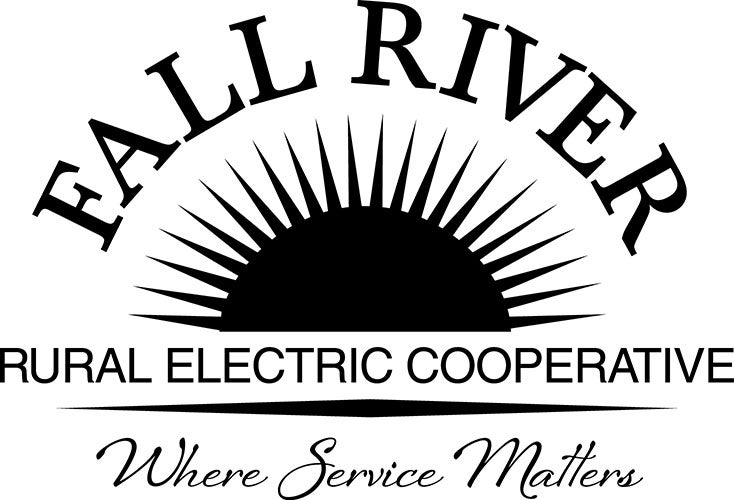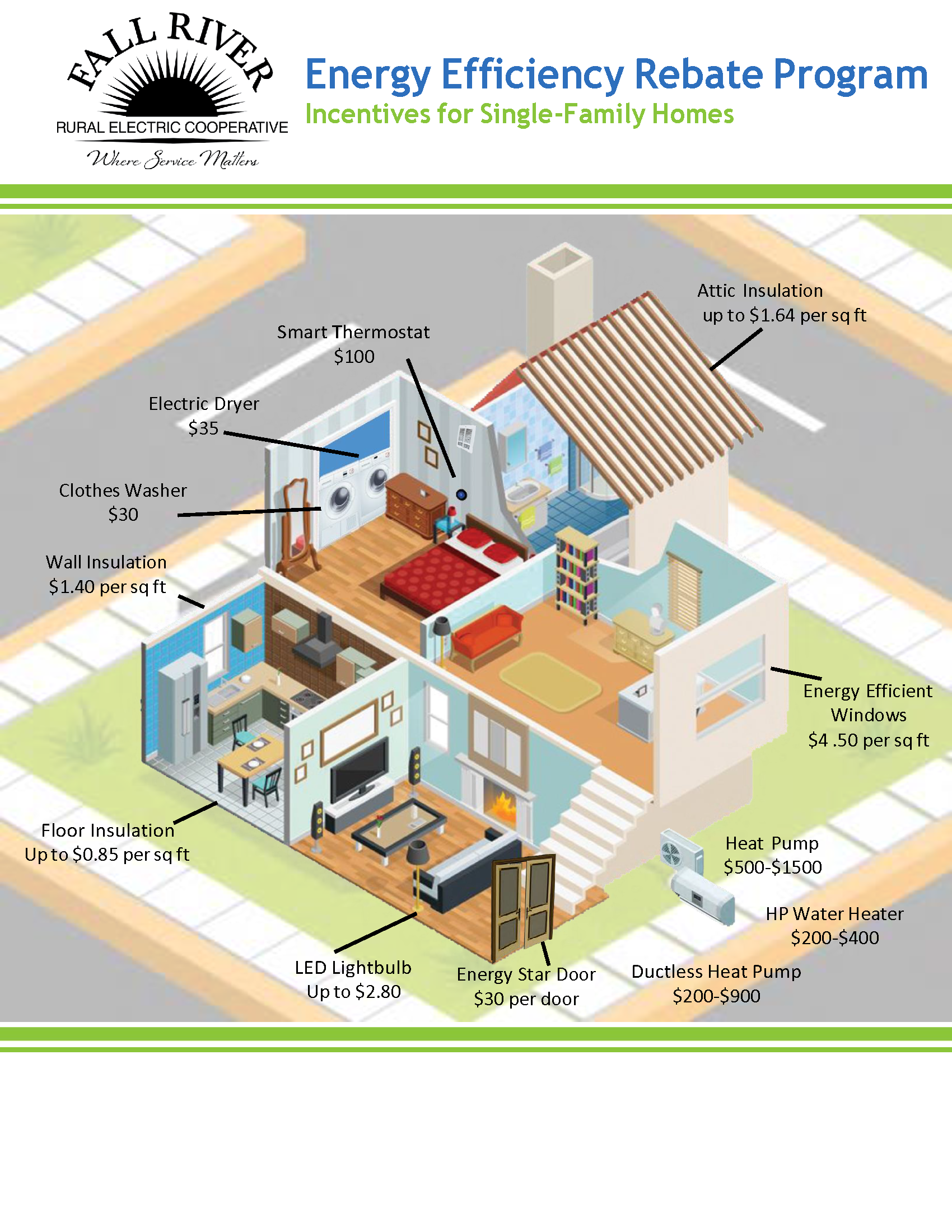DEMAND BILLING RESOURCES
This page is intended to help members of Fall River Electric (FRE) better understand demand & why Fall River Electric Cooperative is charging a demand fee. Below you will find resources, such as calculators, conservation program information, and additional links to help you determine how this rate change will impact you. The link below is a great tool to see how household appliances affect demand.
Demand Calculator
Did you know that using multiple household appliances at any one given time can increase your demand? Click here to review some common household appliances and what impact they have to your demand (kW) when used together.

Demand - Frequently Asked Questions (FAQs)
Demand is the largest amount of power a residence/business uses at any point in time within a billing month.
Demand is the largest amount of power used at any point in time within a billing period. Think of a vehicle speedometer as a way to measure demand. If you are traveling at 60mph but then speed up to 70mph, your maximum speed of 70 would translate into your demand. Advancements in technology now allows the Cooperative to collect residential demand efficiently & accurately.
Historically, residential demand has been included & paid for as part of the kilowatt hour charges (kWh) that each residential member receives. Billing demand will accomplish these objectives:
- Provides another valuable resource for members to control their electric usage & thus potentially reduce their over-all expense and
- Large residences have higher demand than smaller ones so by charging for demand it creates a fairer way to treat all residential members.
- Will start to align residential member billing with the Cooperative’s cost for demand.
Strategically, the more members “manage” their demand the less of a need to secure more generation and build facilities such as transmission lines, substations & etc. to meet growing demand needs which helps to keep rates low.
The more information members have as to how they are using the power they pay for, the more ability they have to control those costs and thus reduce their expense.
The best way to reduce demand is to be smarter about how you use all electric powered devices in your home/business. Spreading out the time during which you use electric devices will help lower demand. For example, run your dishwasher at night after everyone has gone to bed, use a programmable thermostat, cook with a microwave instead of an oven, dry clothes when not cooking dinner. Fall River Electric’s website has suggestions on reducing demand & also links to other websites to help you save.
No, Fall River Electric’s kWh rates are so low that a time-of-day rate will not benefit members but as stated above, think about when you use electric devices so that you reduce the number of them operating all at the same time.
The average demand is from 10 to 15 kWs per month. Larger homes & businesses will have a higher demand rate.
Fall River Electric’s website has a demand “calculator” which allows you to see the estimated kW demand for specific electric devices. Some examples include:
- Baseboard heater – 5kW
- Portable electric heater – 1.5kW
- Clothes Dryer – 3.5kW
- Clothes washer - .8kW
- Dishwasher – 1.5kW
- Electric cooktop stove – 1.5kW
- Electric forced air furnace – 7.5kW/1000 sq ft
- Electric range/oven – 2.4kW
- Electric water heater – 4.5kW
- Engine block heater (winter) – 1.8kW
- Freezer – 1kW
- Hair dryer – 1.5kW
Since February 2019, Fall River Electric residential members have seen a line item on their monthly statements referred to as “demand.” Demand is measured in kilowatts. A kilowatt-hour (kWh) and a kilowatt (kW) may sound like the same thing, but they are different. While both are interrelated units of measurement, the major difference between kWh and kW is that a kWh reflects the total amount of electricity used, whereas a kW reflects the rate of electricity usage.
As we explained on our October 21 edition of FLASHES, like kWh and kW to a vehicle speedometer. If you are driving at 60 miles per hour, but then speed up to 70 miles per hour, your maximum speed of 70 would translate into your demand. Because of advancements in technology, Fall River is now able to collect residential demand efficiently and accurately. This provides one more tool for members to use to better control their electric usage—potentially reducing their overall monthly expenses.
Historically, residential demand has been included and paid for as part of each member’s kilowatt hour charge (kWh). Beginning with residential statements received in January 2022, Fall River Electric started charging members $1.00 for each kilowatt (kW) of demand. Larger residences have higher demand than smaller ones. This charge for demand was increased in January 2024 to $2.00 per kW.
Charging for demand creates a way to treat all residential members of the Cooperative more fairly than previously. So, how can a residential member reduce their demand? The best way to reduce demand is to be smarter about how you use electric powered devices in your home. Spreading out the time during which you use electric devices will help lower demand. For example, if you have a delay function on your dishwasher, schedule your dishwasher to run at night when other devices are not being utilized. Use programmable thermostats, cook with a microwave rather than a conventional oven, or dry clothes when other major electric devices are not in use.


